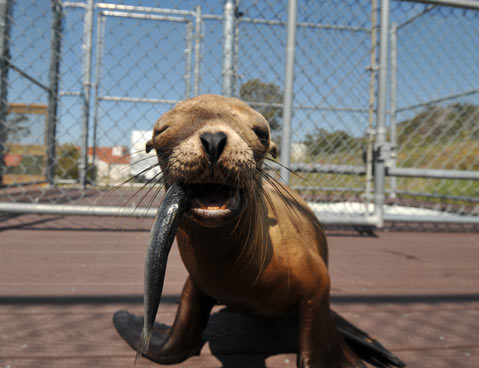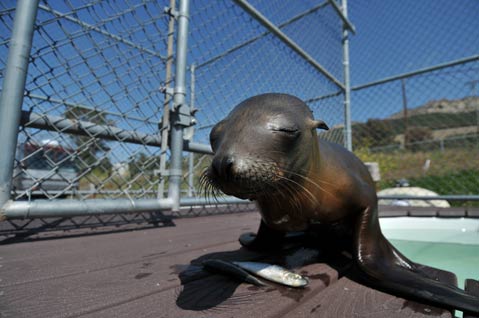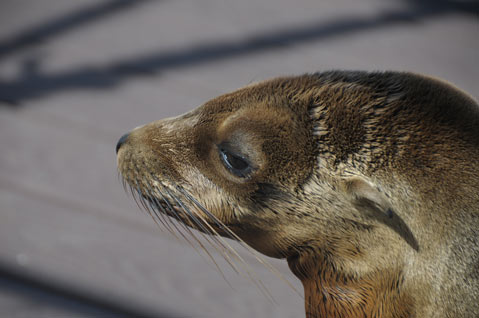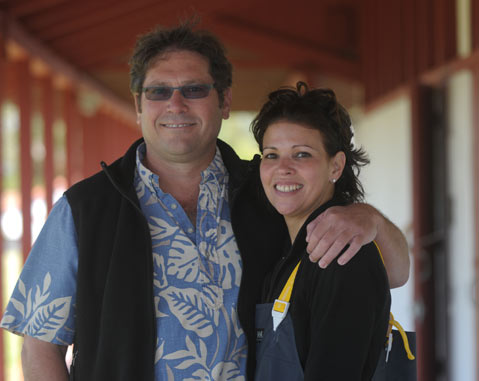Saving the Stranded
Marine Mammals in Need Find Help from the Dovers and Their Team

Right now, the one-year-old sea lion pups pictured in these photos are growing up on the Channel Islands. They have recovered well, considering they were found stranded along nearby mainland beaches. Had it not been for Dr. Samuel Dover, his wife Ruth, and their team of volunteers, the little guys probably wouldn’t have made it.
The Channel Islands Marine and Wildlife Institute (CIMWI)—located on the former Vista del Mar school campus just south of the Gaviota Pass—was opened by the couple in 2006 with the specific purpose of rescuing, rehabilitating, and releasing sick or injured marine mammals. With a long-term lease and potential donation by the Hollister family, the 2.8-acre property and its facilities are in the midst of major changes: The graffitied, dilapidated classrooms are slowly morphing into a world-class treatment center for seals, sea lions, whales, dolphins, and porpoises found high and dry along Ventura’s 43 miles of coastline. Sam and Ruth—with the assistance of 50 loyal volunteers—treated and rescued 95 sea-faring animals last year and have taken in 22 so far since January. They rely heavily on tips that come in through the institute’s rescue hotline (567-1505).

In the quarantine room, where patients are first brought for diagnosis and immediate medical care, a pair of big brown eyes peers from behind a chain-link fence. The sea lion pup, born last summer on the Islands, was found alone, wandering up the steps of a beachside house in Ventura. His ribs are poking through his velvety tan coat, and he’s curled up on a heating pad in the corner of the pen, shivering and scared. Some pups aren’t weaned properly by first-time mothers and don’t know how to hunt when they’re left to fend for themselves, explained Dr. Dover. Left to his own devices, the pup would probably have starved to death, but in the vet’s care, he’s on the road to recovery.
Outside, another California sea lion pup further along in the rehab process is lounging by a circular pool, one of two on the property. Because he, too, wasn’t weaned properly, the pup is learning to recognize that fish come from water, not a person’s hand. As Dover tosses a sardine into the pool, the sea lion quickly dives down, immediately devouring the morsel and poking his head out of the water expectantly. Because they’re opportune eaters, he’ll eat as much as 4.5 pounds of sardines a day, said Dover.

A few weeks after my visit, the young pinniped from the quarantine room was taken on the Condor Express—as is the routine with many CIMWI releases—and dropped off on Santa Cruz Island after gaining much-needed weight and being treated for a few superficial wounds. Older mammals, which aren’t in danger of seeking human contact, are let go on Hollister Beach. Most patients, Dover said, stay at CIMWI for about three to four weeks before they’re reintroduced to the channel.
Though awaiting word on a couple of grant applications, CIMWI relies heavily on donations from outside sources; they have been given expired supplies by Cottage Hospital and a refrigerator and sink from Sojourner Café. The Dovers have also invested a small fortune of their own money into the project. And while they’re keeping things afloat, they need all the help they can get.
Still, they have big plans for the old school. According to Ruth, they hope to eventually set up a fish kitchen, administration offices and classrooms, and research labs to compliment the hospital and surgery rooms already in existence. They also want to set up a large outside tank to hold sick dolphins during their treatment, and hire someone fulltime.

The institute is a dream of Dover’s. He’s happy to be his own boss after working as a staff veterinarian for Sea World for 10 years; he also worked at the Santa Barbara Zoo. Throughout his career, he’s become known for developing and perfecting noninvasive surgery techniques on marine mammals, literally helping to write the discipline’s go-to chapter on the subject in the CRC Handbook of Marine Mammal Medicine: Health, Disease, and Rehabilitation.
While the Dovers continue to save ocean mammals one at a time, they’re also reaching out to the community in the name of education and preservation. They’re always in need of new volunteers and additional funding; anyone interested in the institute’s work should visit cimwi.org.
To learn what to do if you come across a stranded marine mammal, visit http://cimwi.org/stranded_whattodo.html.



